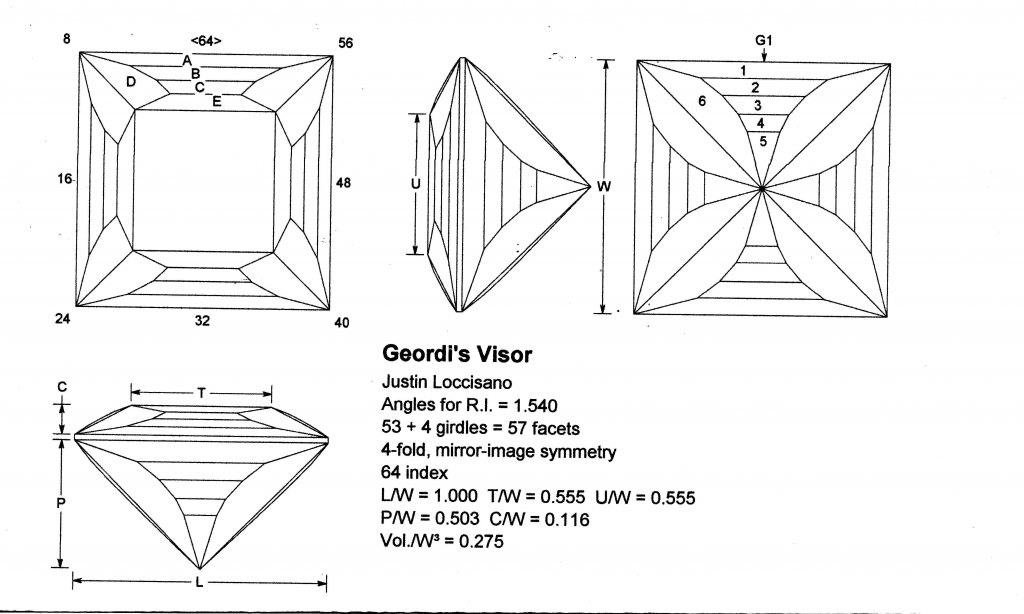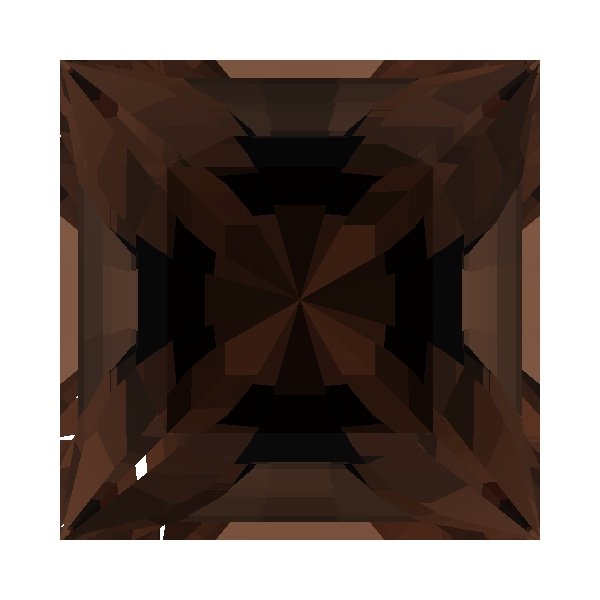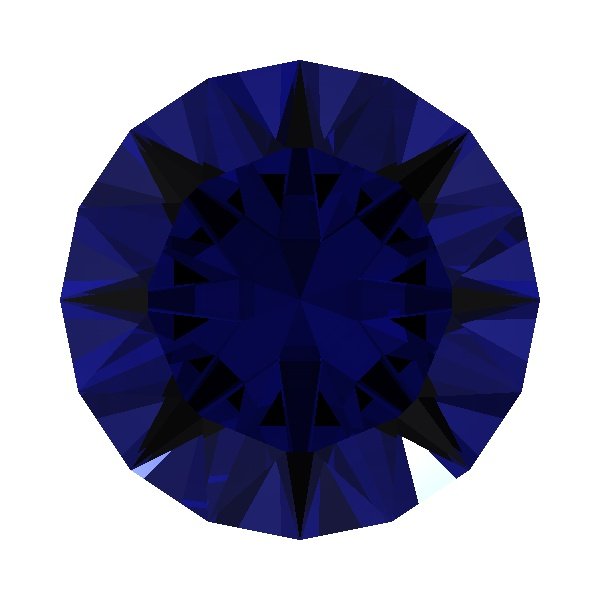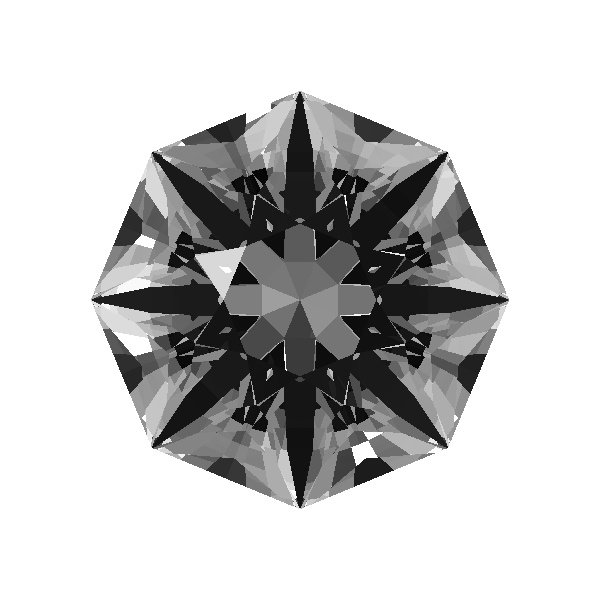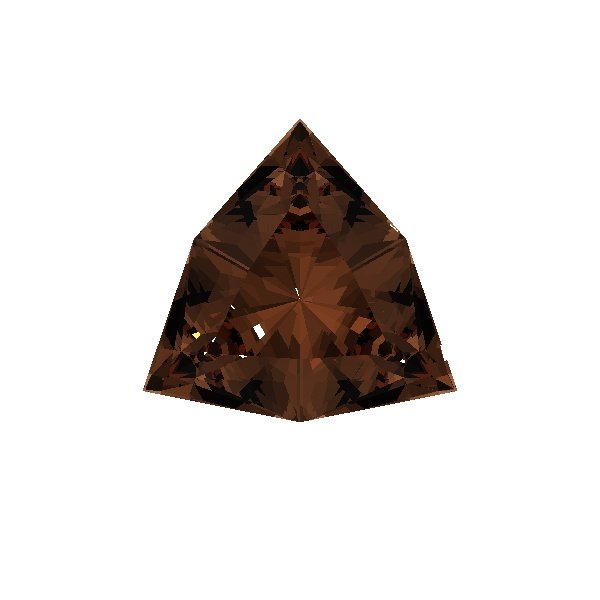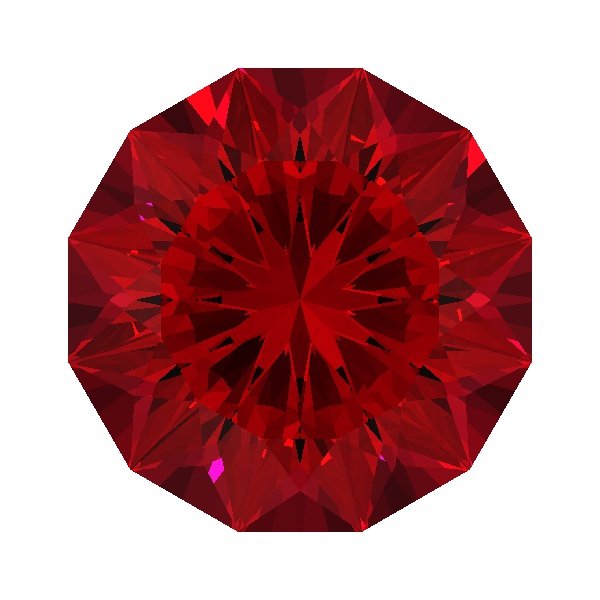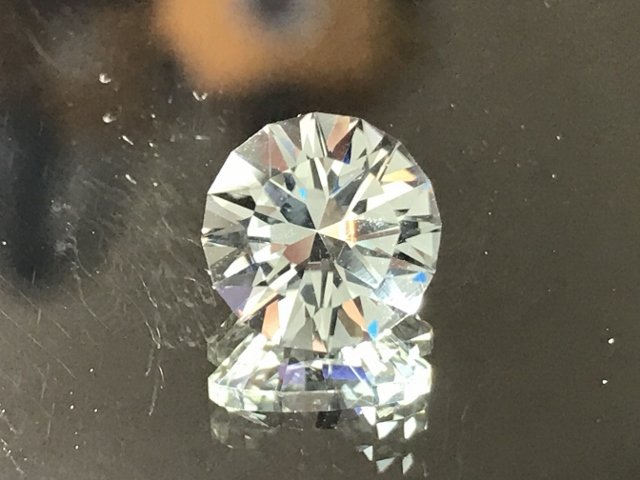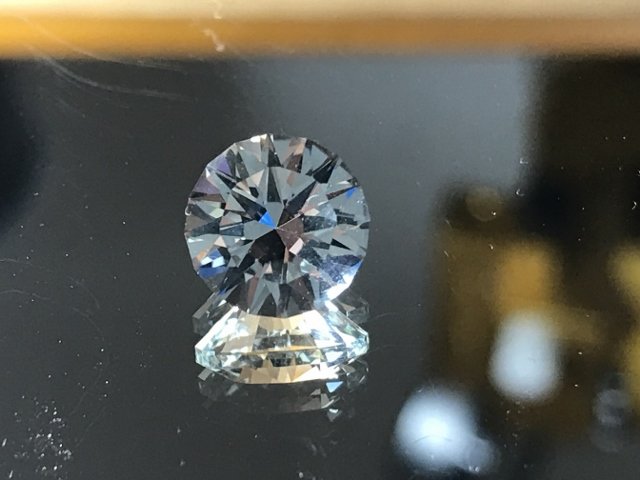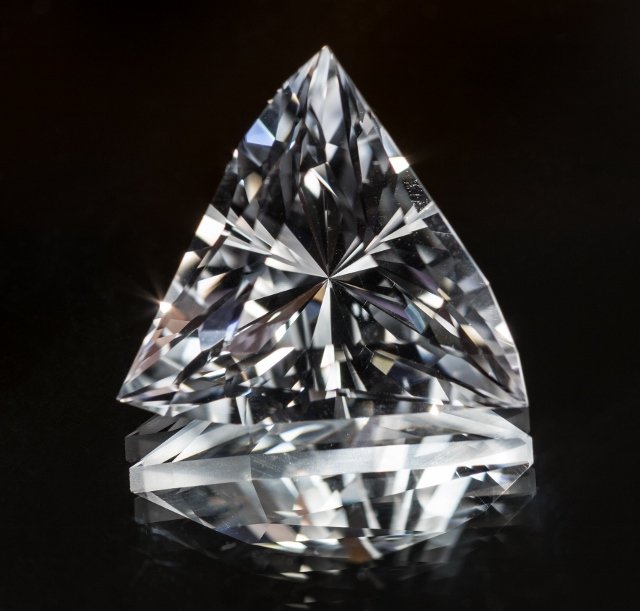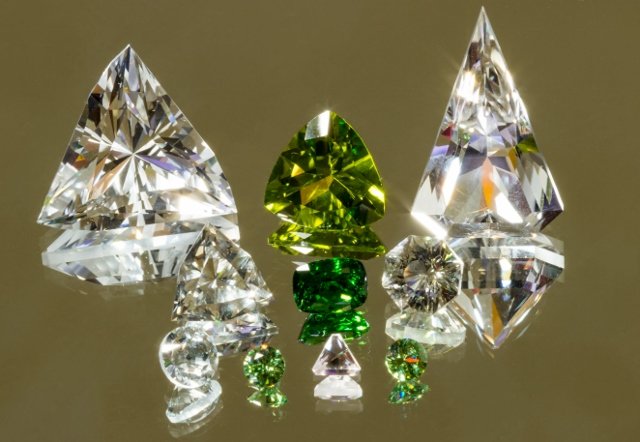Thanks shivan. I will take you up on that offer. I'll send you a PM.
I agree lefty. I use Gemray as a guide to adjust angles to suit different RI's and to check estimated internal patterns but this program is not the best for the latter. It can show an image of what the stone should look like but its not always the case. Interpreting the data is also requires a bit of understanding and experimentation.
What some people don't realise is that the dark patches in a GemRay face-up image is actually the viewer being reflected inside the stone not leakage. This seriously impacts on the performance of a piece either to enhance the stones brilliance or diminish it. So for example, the chernobyl brilliant above has eight triangle points and an octagon inside that will reflect the viewer. (octagon is not actually in the design, it is an illusion created by interactions between the pavilion mains and the table shape)
These areas still count as "brightness" to the program because light will still travel into the stone, hit the facet and reflect straight back out the crown. These facets are at the right angle to reflect an image rather than appear as a pane of light. Even though mathematically speaking, image reflection counts as brightness. Too much will actually rob the stone of its brilliance. (big difference between brilliance and brightness in my opinion)
The image below is of one of my earlier designs (sundown barion). This design performs very well on GemRay. It has a crazy internal image and this image translates exceptionally well into a cut stone BUT, there is too much image reflection and the stone in real life is quite dull to look at.
On the other side of the coin, this is a GemRay image of my Mitsubishi trillion (cut smokey in the thread above). It performs exceptionally well in GemRay and translates exactly as predicted into the real world (minus the minuscule inaccuracies that a human can't account for but a computer can)
The difference in real world performance compared to their perspective GemRay performance in my opinion, can be put down to 2 simple factors:
Trillion centre has no or limited image reflection in the centre which is the part of the stone that most catches the eye = excellent real world performance
The sundown has a dense accumulation of image reflective facets close to the centre. = poor real world performance
I have found that a good design requires a balance of light reflection and image reflection to create an internal image that doesn't impede the brilliance of a piece. Anyway, that's my understanding based on my experiments. If someone reading this has a different opinion I would love to hear it. The programs don't exactly come with a course in gemstone design so any idea is an idea worth exploring.



